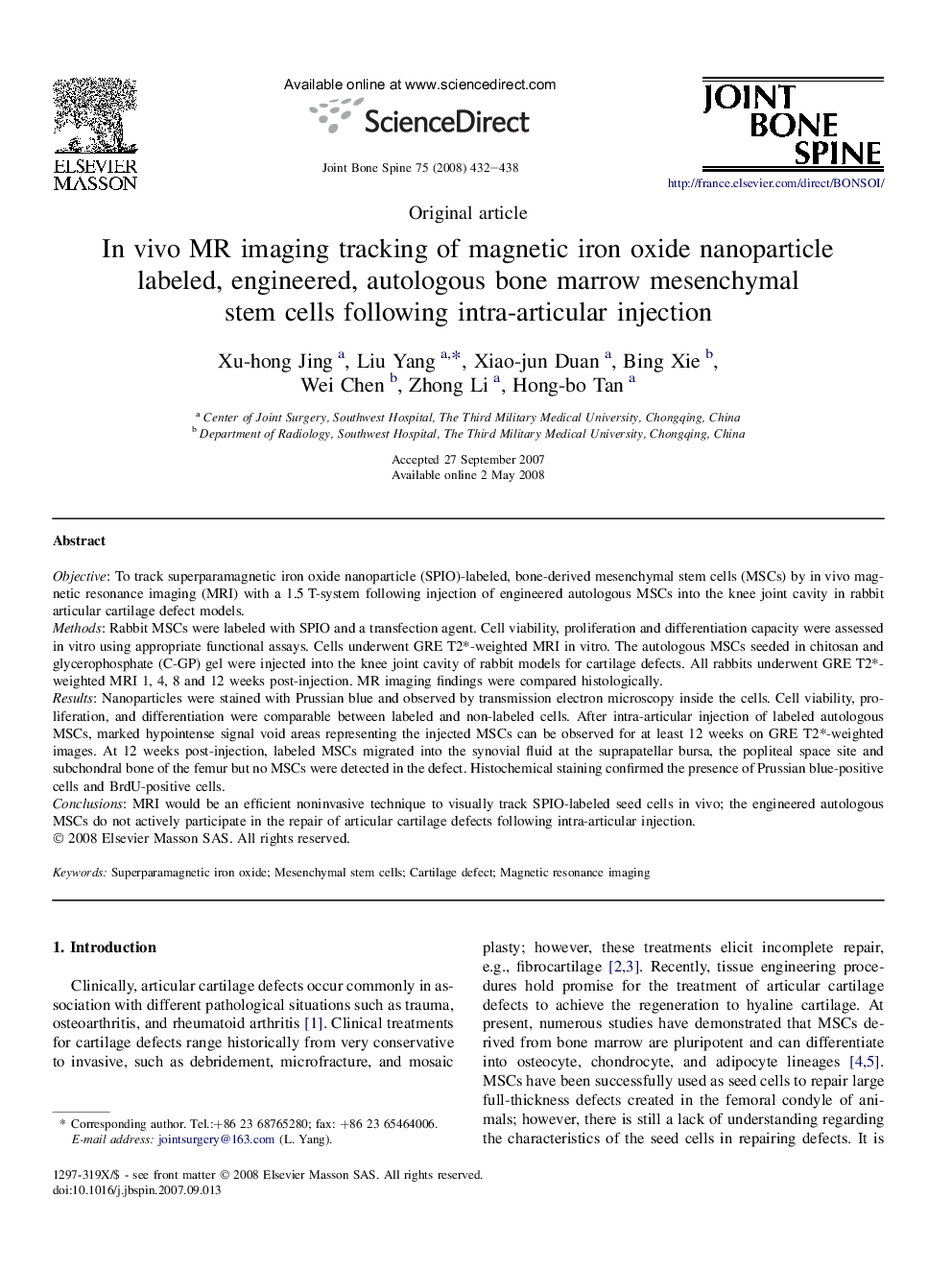| کد مقاله | کد نشریه | سال انتشار | مقاله انگلیسی | نسخه تمام متن |
|---|---|---|---|---|
| 3366834 | 1218419 | 2008 | 7 صفحه PDF | دانلود رایگان |

ObjectiveTo track superparamagnetic iron oxide nanoparticle (SPIO)-labeled, bone-derived mesenchymal stem cells (MSCs) by in vivo magnetic resonance imaging (MRI) with a 1.5 T-system following injection of engineered autologous MSCs into the knee joint cavity in rabbit articular cartilage defect models.MethodsRabbit MSCs were labeled with SPIO and a transfection agent. Cell viability, proliferation and differentiation capacity were assessed in vitro using appropriate functional assays. Cells underwent GRE T2*-weighted MRI in vitro. The autologous MSCs seeded in chitosan and glycerophosphate (C-GP) gel were injected into the knee joint cavity of rabbit models for cartilage defects. All rabbits underwent GRE T2*-weighted MRI 1, 4, 8 and 12 weeks post-injection. MR imaging findings were compared histologically.ResultsNanoparticles were stained with Prussian blue and observed by transmission electron microscopy inside the cells. Cell viability, proliferation, and differentiation were comparable between labeled and non-labeled cells. After intra-articular injection of labeled autologous MSCs, marked hypointense signal void areas representing the injected MSCs can be observed for at least 12 weeks on GRE T2*-weighted images. At 12 weeks post-injection, labeled MSCs migrated into the synovial fluid at the suprapatellar bursa, the popliteal space site and subchondral bone of the femur but no MSCs were detected in the defect. Histochemical staining confirmed the presence of Prussian blue-positive cells and BrdU-positive cells.ConclusionsMRI would be an efficient noninvasive technique to visually track SPIO-labeled seed cells in vivo; the engineered autologous MSCs do not actively participate in the repair of articular cartilage defects following intra-articular injection.
Journal: Joint Bone Spine - Volume 75, Issue 4, July 2008, Pages 432–438